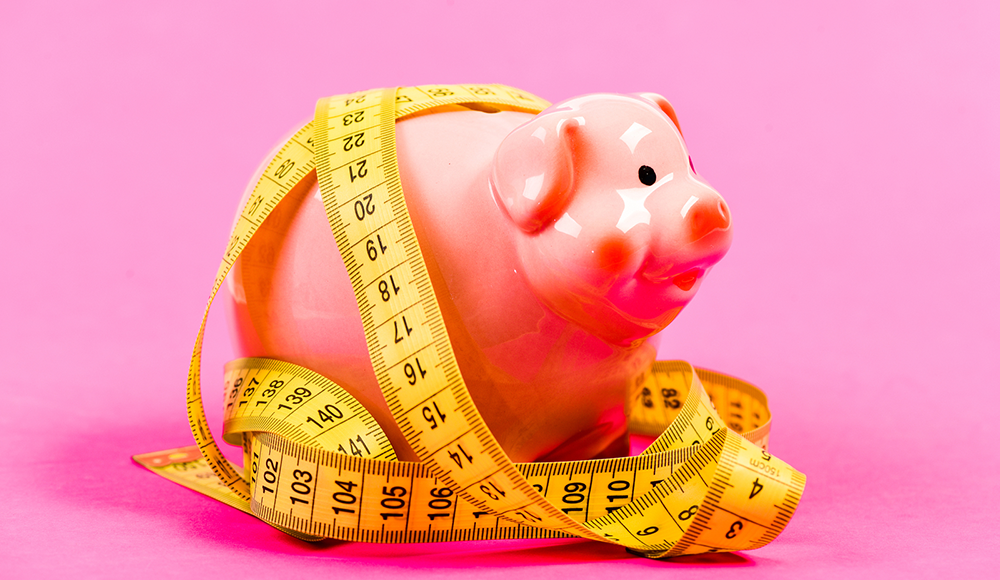How to Plan a Budget as a Side Hustler

If you’re an established professional with a full-time job but you’ve got that entrepreneurial itch, you may have considered (or started) a side hustle that puts your passions to work. But what do you do with the cash that flows into your account each month, especially if it’s erratic and unpredictable?
Whether you’re taking advantage of websites that pay you to shop, reselling items online, providing your skills as a service, or conducting any other small business venture, it’s important to know how to budget, save, and spend your hard-earned cash smartly.
We’ve got your back with advice on how to set and stick to a budget as a side hustler, as well as an insider tip you may not expect. Combine these two strategies, and you might be able to end your money woes for good.
How to Create (and Stick to) a Side-Hustle-Friendly Budget
We all need a little help when it comes to budgeting, so consider starting by downloading a budgeting app like Mint to get a clear picture of your income and expenses. Next, follow these steps:
- Calculate your baseline income: If your income fluctuates, figure out your baseline income, i.e., the least amount of money you make in any given month.
- Subtract your monthly bills: Subtract all of your monthly bills (rent, utilities, car payment, student loans, etc.) from your baseline income. Your baseline income should hopefully cover all of your necessary expenses, so you’ll never fall behind on bills.
- Budget for spending categories: Take a look at your average spending on necessities like food, transportation, personal care, etc. Establish a dollar amount for each category and subtract that from your baseline income.
- Put something in savings: You should put aside about 20 percent of your income for a rainy day, according to the popular 50/30/20 rule. This guideline suggests you put 50 percent of your after-tax income toward necessities, 30 percent toward things you want, and 20 percent into savings. If you have 20 percent of your baseline or less left over after accounting for your monthly expenses, deposit that into a high-yield savings account. This money will also be there to help you if your baseline income drops below your expenses on occasion.
- Decide where to put your extra income: Unallocated money from your side hustle or bonuses from your full-time job can either go into a savings account or be divided among categories such as entertainment, dining out, travel, etc.
If you have a slow month with your side hustle, you may not have much extra cash to throw around for fun, but with this system, at least you’ll know your necessary expenses will be taken care of. To keep this process on autopilot, set up automatic bill payments and savings deposits. With minimal effort on your part, your bills will always get paid on time, and you’ll have money tucked away for emergencies.
Insider Tip: Use a Credit Card
Unexpected expenses can wreak havoc on your finances, even if you have an established budget. That’s why it’s a good idea to have a credit card on hand. Credit cards give you more time to pay for your expenses, and you won’t even have to pay interest or fees as long as your payment goes through before the due date.
How is that possible? There’s a 21-day grace period in between the statement closing date and your payment due date. It’s like having three extra weeks to pay for the things you buy each month, which can give you the opportunity to rack up some extra cash from your side hustle if you need it.
As a side hustler, you may want to consider applying for a business credit card. You’ll likely be eligible, no matter how small your business is, and it may even be possible to get approved with no credit history. Business credit cards typically offer a higher credit limit, which can raise your credit score quickly if you use your card responsibly. If you have costs associated with your business, you’ll be able to keep those expenses separate from your personal budget.
—
Working a side job can be fun and rewarding, and managing your fluctuating income doesn’t have to be a headache. Once you plan your budget, use credit cards wisely, and make on-time payments, you’ll be left with the enjoyable task of deciding how to spend your surplus income. How about a trip to Hawaii?
Lindsay Frankel is a Denver transplant and freelance writer who specializes in personal finance topics.

